I. Introduction
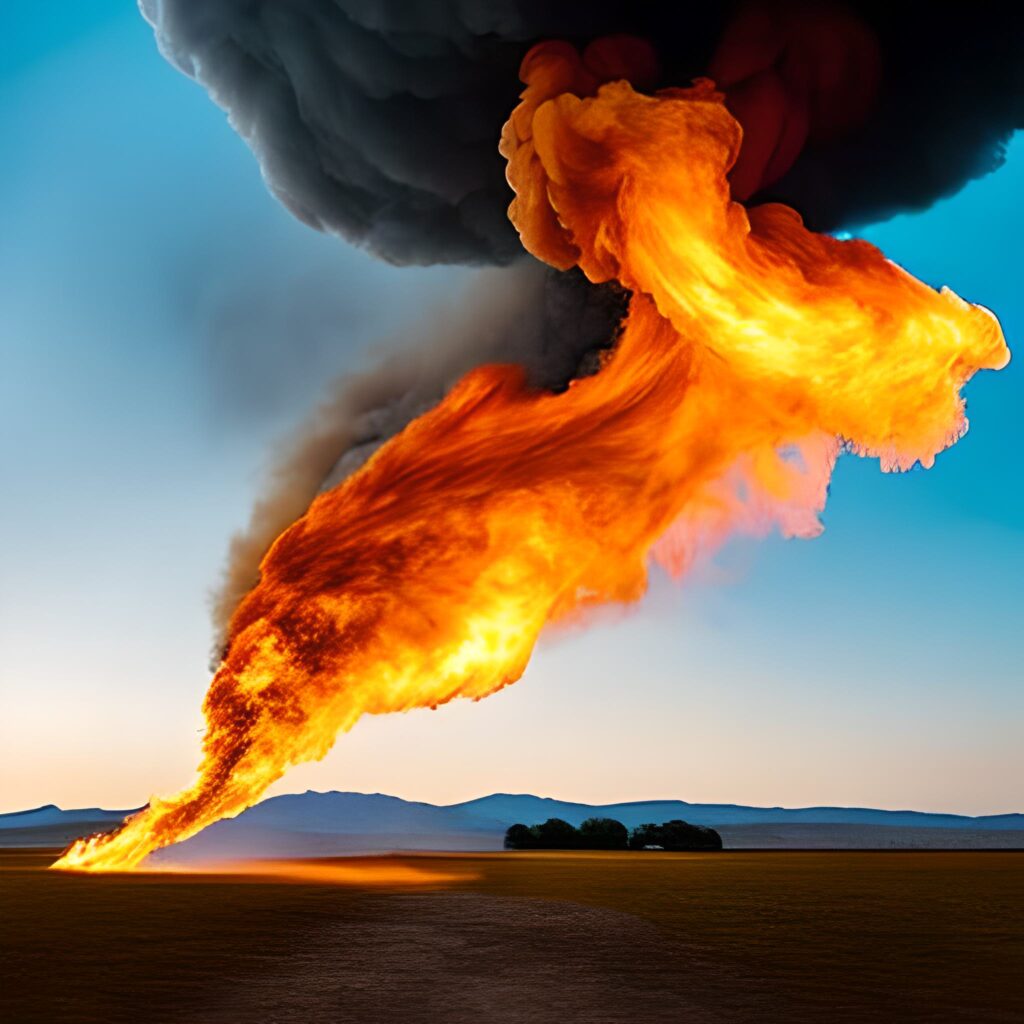
A. What are fire whirls?
Fire whirls, also known as fire tornadoes or firenados, are a rare but dangerous natural phenomenon that can occur during wildfires or other intense fires. They are spinning vortices of flame that can range in size from a few feet to more than a mile wide, and can extend hundreds of feet into the air.
Fire whirls are created when intense heat and turbulent wind conditions combine to create a spinning column of hot air. As the column rises, it draws in more hot air and fire, creating a self-sustaining vortex.
B. Importance of understanding fire whirls
Understanding fire whirls is important for several reasons. First, fire whirls can be incredibly destructive, causing damage to structures, vehicles, and other property, as well as endangering human lives. Second, fire whirls can also have a significant impact on the spread and behavior of wildfires, making them more difficult to contain and control.
By studying fire whirls and learning more about how they are formed, scientists and fire experts can better predict when and where fire whirls are likely to occur, and take steps to prevent or mitigate their damage. This knowledge can also help firefighters and emergency responders better understand and respond to wildfires and other fires where fire whirls may be present.
In addition, understanding fire whirls can also help raise public awareness about the dangers of wildfires and the importance of fire safety. By educating people about the causes and effects of fire whirls, we can help reduce the risk of wildfires and minimize the damage they cause.
II. Features and types of fire whirls
A. Characteristics of fire whirls
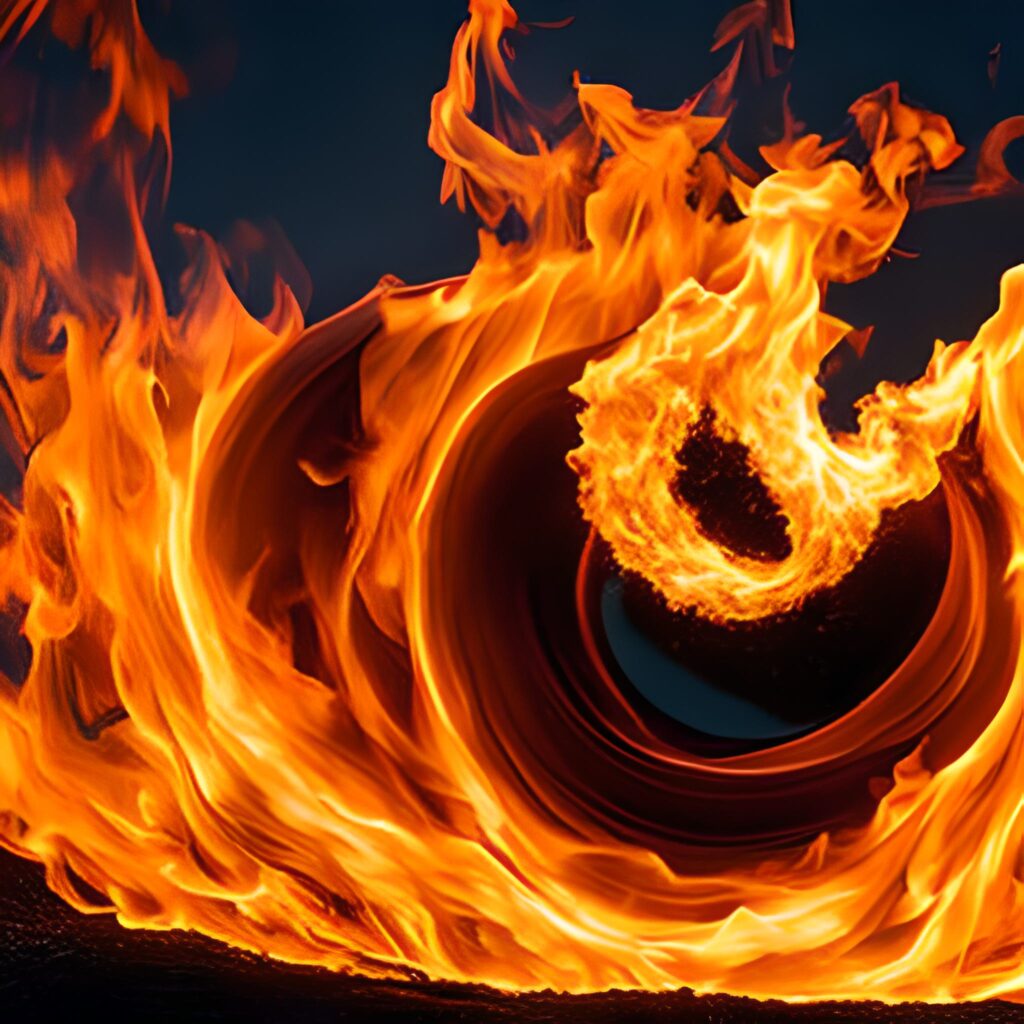
Fire whirls are rotating columns of flame that occur during wildfires or other intense fires. They are characterized by a spinning vortex of flames that can range in size from a few feet to over a mile wide. Fire whirls can be incredibly destructive, with wind speeds that can exceed 100 miles per hour and temperatures that can reach over 2,000 degrees Fahrenheit.
B. Types of fire whirls
There are three main types of fire whirls: surface fire whirls, mid-level fire whirls, and vertical fire whirls.
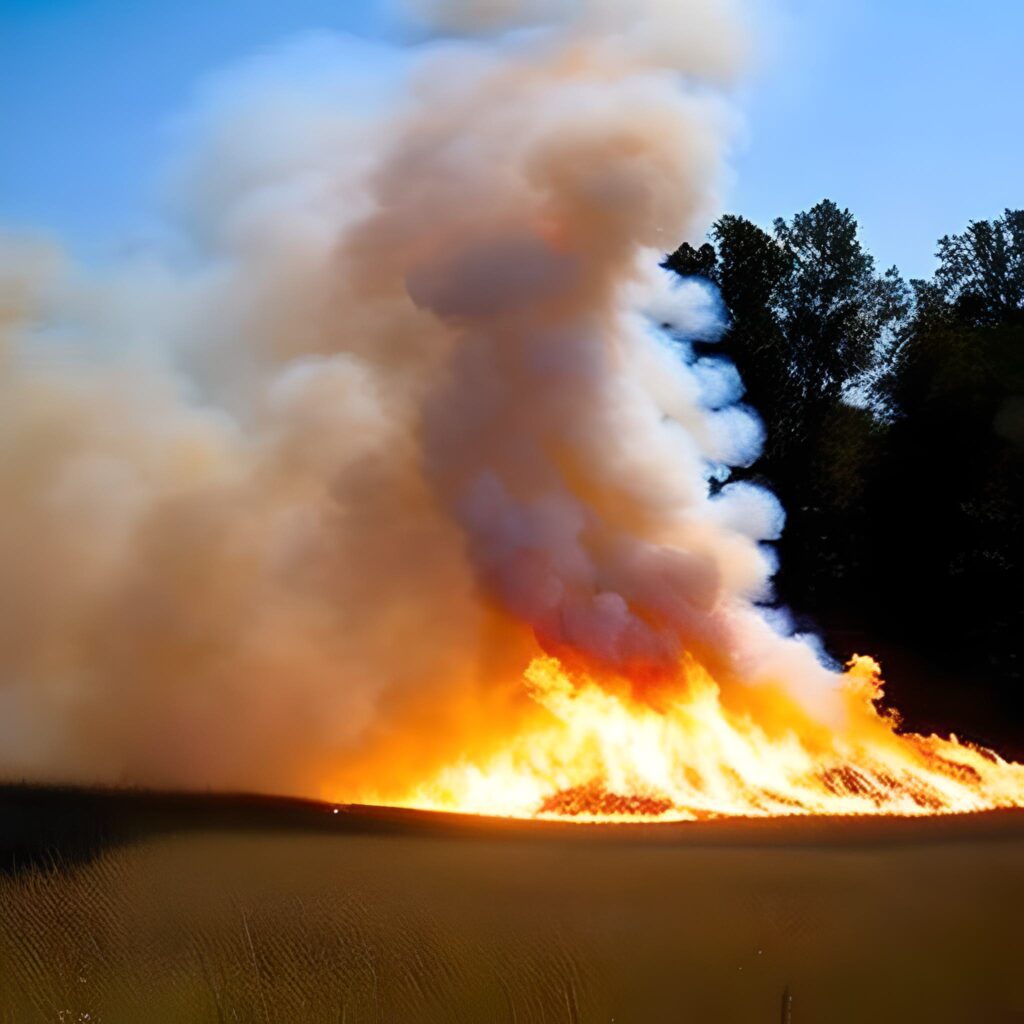
- Surface fire whirls
Surface fire whirls are the most common type of fire whirl and occur close to the ground. They typically range in height from a few inches to a few feet and are characterized by swirling flames that move across the ground. Surface fire whirls are often caused by winds blowing across uneven terrain, causing the fire to spin and lift.

- Mid-level fire whirls
Mid-level fire whirls occur at higher elevations than surface fire whirls and can range in height from a few feet to several hundred feet. They are characterized by a vertical column of spinning flames that is separate from the main fire. Mid-level fire whirls are often caused by winds that are channeled through canyons or other natural features, causing the fire to spin and rise.
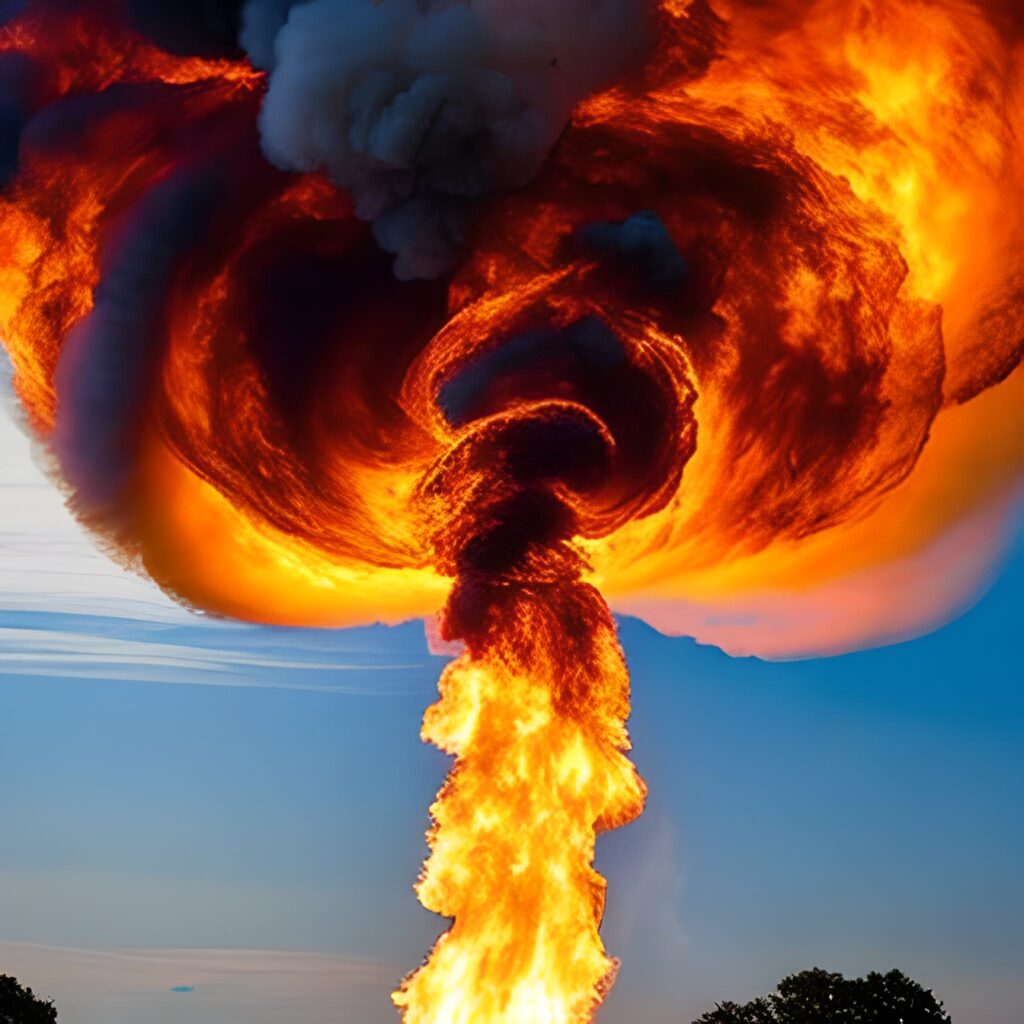
- Vertical fire whirls
Vertical fire whirls are the most rare and intense type of fire whirl. They can extend up into the atmosphere and can be over a mile high. Vertical fire whirls are characterized by a narrow, vertical column of spinning flames that is separate from the main fire. They are often caused by extreme wind conditions that create a powerful updraft, lifting the fire high into the air.
C. How fire whirls are formed?
Fire whirls are formed when three key conditions are present: a heat source, wind conditions, and a fuel source.
- Heat source
The heat source for a fire whirl can come from a wildfire, a brush fire, or any other intense fire. The heat causes the air to rise, creating a strong updraft that can lift flames into the air.
- Wind conditions
Wind conditions play a critical role in the formation of fire whirls. When winds blow across uneven terrain, they can create eddies and vortices that can cause the fire to spin and lift.
- Fuel source
The fuel source for a fire whirl can be anything that burns, such as trees, shrubs, grass, or buildings. The fuel provides the necessary material for the fire to continue burning and spinning. In some cases, fire whirls can even create their own fuel by pulling in additional material from the surrounding environment.
III. Where are fire whirls most common?
Fire whirls, also known as fire tornadoes or firenados, can occur in various parts of the world where specific conditions are present. Here are some of the factors that contribute to the occurrence of fire whirls:
A. Geographical regions
Fire whirls are most commonly observed in regions with a hot and dry climate, such as deserts, grasslands, and savannas. They can also occur in areas with a history of wildfires, including certain forests and wooded regions. Some of the regions where fire whirls are more likely to occur include:
- Western United States
- Australia
- South America
- Southern Europe
- Southeast Asia
B. Climate conditions
Fire whirls are usually associated with hot and dry weather conditions, which are conducive to the rapid spread of wildfires. The high temperatures and low humidity levels create a favorable environment for the formation of fire whirls. Additionally, strong winds can cause the fire to spread quickly and create the necessary conditions for a fire whirl.
C. Causes of fires leading to fire whirls
There are two main causes of fires that can lead to the formation of fire whirls: natural causes and human causes.
- Natural causes
Natural causes of fires include lightning strikes, volcanic eruptions, and spontaneous combustion. Lightning strikes are a common cause of wildfires, and when combined with dry conditions and high winds, can lead to the formation of fire whirls.
- Human causes
Human activities, such as campfires, cigarettes, and fireworks, are major contributors to the occurrence of wildfires. Additionally, some human actions, such as land development and deforestation, can alter the natural environment and increase the risk of fires and fire whirls.
IV. What happens during a fire whirl?
A. Physical characteristics
1.Size and shape
Fire whirls can vary in size and shape, depending on the intensity of the fire and the wind conditions. Some fire whirls can be as small as a few feet in diameter, while others can be hundreds of feet wide. In terms of shape, fire whirls can be tall and narrow or wide and funnel-shaped, with a core of flames surrounded by a rotating column of smoke and debris.
2.Wind speed and direction
Wind speed and direction are also key physical characteristics of fire whirls. Strong, gusty winds can create turbulent conditions that make it easier for fire whirls to form and grow. The direction of the wind can also impact the movement and direction of the fire whirl.
3.Temperature
Temperature is another important factor in fire whirls. Fire whirls can generate intense heat, with temperatures that can reach thousands of degrees Fahrenheit. This heat can further fuel the fire and make it more difficult to control.
B. Effects of fire whirls
1. Damage to structures
Fire whirls can cause significant damage to buildings and other structures in their path. The rotating column of flames and debris can quickly engulf a structure and cause it to collapse.
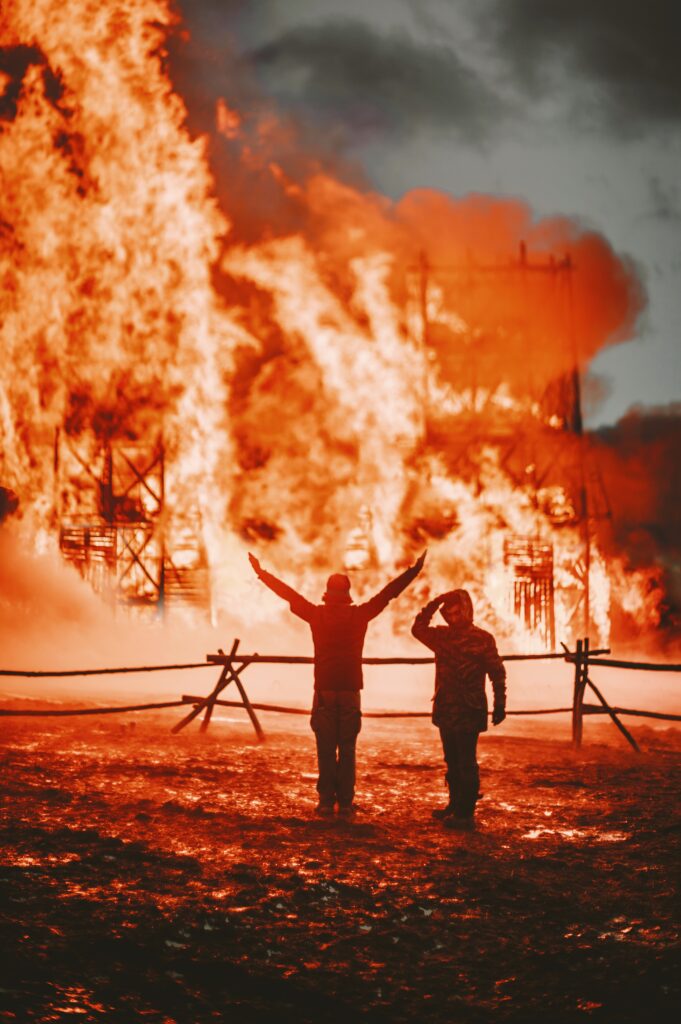
2. Impact on wildfires
Fire whirls can also have a major impact on wildfires, making them more difficult to contain and extinguish. As a fire whirl moves through an area, it can spread the fire in new directions and create additional hot spots.
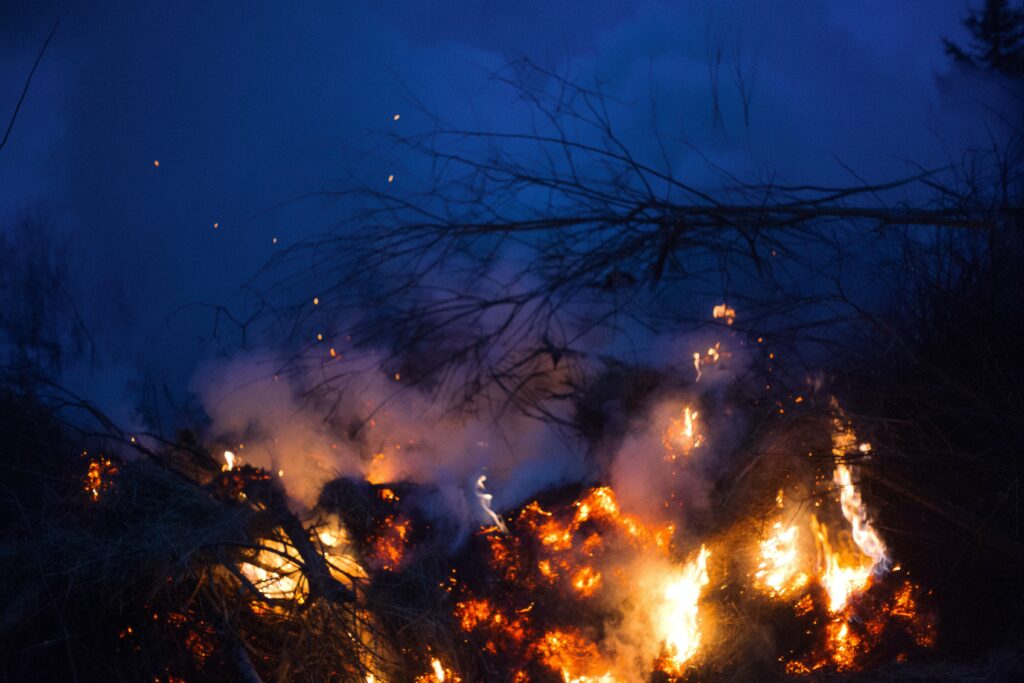
3. Dangers to humans and wildlife
Fire whirls can be incredibly dangerous for people and animals in their path. The high winds and intense heat can cause burns, and the swirling debris can be deadly. In addition, the smoke and toxic gases generated by a fire whirl can pose a serious health risk to anyone in the area.

ALSO READ: Why people enjoy horror movies?
V. What are the names of fire whirls?
Fire whirls, also known as fire tornadoes or firenados, have been given a number of historical and popular names over the years. Some of the most commonly used names for fire whirls include:
A. Historical and popular names for fire whirls
- Devil’s tornado: This name is used to describe fire whirls due to the intense heat and destructive power of the phenomenon, which is similar to the destructive force of a tornado.
- Fire devil: This name is used to describe the swirling flames and smoke that are characteristic of a fire whirl, which can resemble a devilish creature.
- Fire twister: This name is used to describe the spinning motion of a fire whirl, which can resemble the twisting motion of a tornado.
- Firestorm: This name is used to describe the intense and widespread fire conditions that can lead to the formation of fire whirls, which can exacerbate the damage caused by the fire.
The origin and meaning of the names for fire whirls reflect the awe and fear inspired by this natural phenomenon. The name “Devil’s tornado” reflects the destructive power of fire whirls, which can seem almost otherworldly in their intensity. The name “Fire devil” plays on the imagery of swirling flames and smoke, while “Fire twister” focuses on the spinning motion of the phenomenon. “Firestorm” is used to describe the widespread and intense fires that can create the conditions for fire whirls to form. Ultimately, the names for fire whirls reflect the respect and caution that must be exercised when dealing with this powerful and potentially dangerous natural phenomenon.
VI. Can fire whirls be predicted?
While it is difficult to predict when and where a fire whirl will occur, there are several methods that scientists and firefighters use to try to anticipate their formation.
A. Methods for predicting fire whirls
- Weather forecasting: By monitoring weather patterns, scientists can predict when conditions are favorable for fires and fire whirls to occur. Factors such as high temperatures, low humidity, and strong winds can increase the likelihood of a fire whirl.
- Aerial reconnaissance: Aerial surveys using drones, helicopters or planes can help identify potential hotspots and provide a better understanding of the conditions on the ground.
- Computer models: Computer models can be used to simulate fire behavior, including the formation of fire whirls. These models take into account factors such as wind speed and direction, temperature, and topography to predict the likelihood of a fire whirl occurring.
B. Challenges and limitations in prediction
Despite these methods, predicting fire whirls remains a challenge due to their unpredictable and rapidly changing nature. The challenges and limitations in predicting fire whirls include:
- Lack of data: Fire whirls are rare events, and there is limited data available to accurately predict their behavior.
- Dynamic conditions: Fire whirls can form quickly and can change direction and intensity rapidly, making it difficult to predict their behavior accurately.
- Complexity of factors: The formation of fire whirls is influenced by numerous factors, including wind, temperature, and fuel sources. It can be challenging to identify and accurately predict all of these factors.
- Human factors: Human factors, such as firefighting resources and strategies, can impact the formation and behavior of fire whirls, making it even more difficult to predict.
VII. What was the deadliest fire whirl?
While fire whirls are rare occurrences, they can be incredibly destructive when they do occur. Some of the deadliest fire whirls in history have caused significant damage to communities and the environment, leaving a lasting impact on those affected. Here are some historical examples of deadly fire whirls:
A. Historical examples of deadly fire whirls
- Peshtigo Fire Whirl (1871) – This fire whirl occurred during the Peshtigo Fire, a massive wildfire that burned over 1.2 million acres in Wisconsin and Michigan. The fire killed an estimated 1,500 people and destroyed the town of Peshtigo. The Peshtigo Fire Whirl was reported to have been a mile wide and reached heights of over 1,000 feet.
- Black Dragon Fire Tornado (1987) – The Black Dragon Fire Tornado occurred during a wildfire in China’s Heilongjiang province. The fire tornado was estimated to have been over 3,000 feet tall and traveled at speeds of up to 45 miles per hour. The fire killed 233 people and destroyed over 17,000 homes.
- Canberra Firestorm (2003) – The Canberra Firestorm was a series of bushfires that occurred in Australia’s capital city, Canberra. The fires were fueled by high winds and hot, dry conditions, and led to the formation of several fire whirls. The fires killed four people and destroyed over 500 homes.
B. Impact on communities and environment
The impact of deadly fire whirls on communities and the environment can be devastating. Homes and buildings can be completely destroyed, leaving families without shelter or possessions. Wildlife and ecosystems can also suffer, with long-term effects on the environment. In addition to physical damage, the emotional toll of experiencing a deadly fire whirl can be significant, causing trauma and long-lasting psychological effects.
C. Lessons learned from past incidents
While deadly fire whirls cannot always be prevented, there are important lessons to be learned from past incidents. Effective fire management strategies, including controlled burns and clearing of fire-prone areas, can help reduce the risk of large-scale wildfires and fire whirls. Early warning systems and evacuation plans can also save lives in the event of a fire. Additionally, educating the public on fire safety and prevention can help reduce the number of fires overall.
VIII. How do you stay safe during a fire whirl?
A. Precautions to take before a fire whirl occurs
- Be aware of the fire danger in your area, and keep up-to-date with fire conditions by listening to local news or official government channels.
- Prepare an emergency kit with basic supplies like food, water, and medical supplies in case of evacuation.
- Create a defensible space around your home by removing dead vegetation, trimming trees, and clearing debris to reduce the fuel source for a fire.
B. Steps to take during a fire whirl
- Evacuate immediately if you are in the path of a fire whirl.
- If evacuation is not possible, seek shelter in a sturdy building or sheltered area away from the path of the fire.
- Protect yourself from heat and smoke by wearing protective clothing, such as a long-sleeved shirt, long pants, and sturdy shoes.
- Cover your nose and mouth with a cloth or mask to filter smoke and debris.
- Stay low to the ground to avoid smoke and heat, and crawl to an exit if necessary.
C. Safety measures after a fire whirl
- Be cautious when returning to your home or property after a fire whirl has passed. Look for potential hazards like unstable structures, live wires, or gas leaks.
- Check your home and property for any remaining hot spots or embers that could reignite a fire.
- If you have suffered any injuries or loss, seek medical and/or emotional support.
- Consider contacting a professional for fire damage restoration or cleanup to ensure the safety of your home and property.
IX. Conclusion
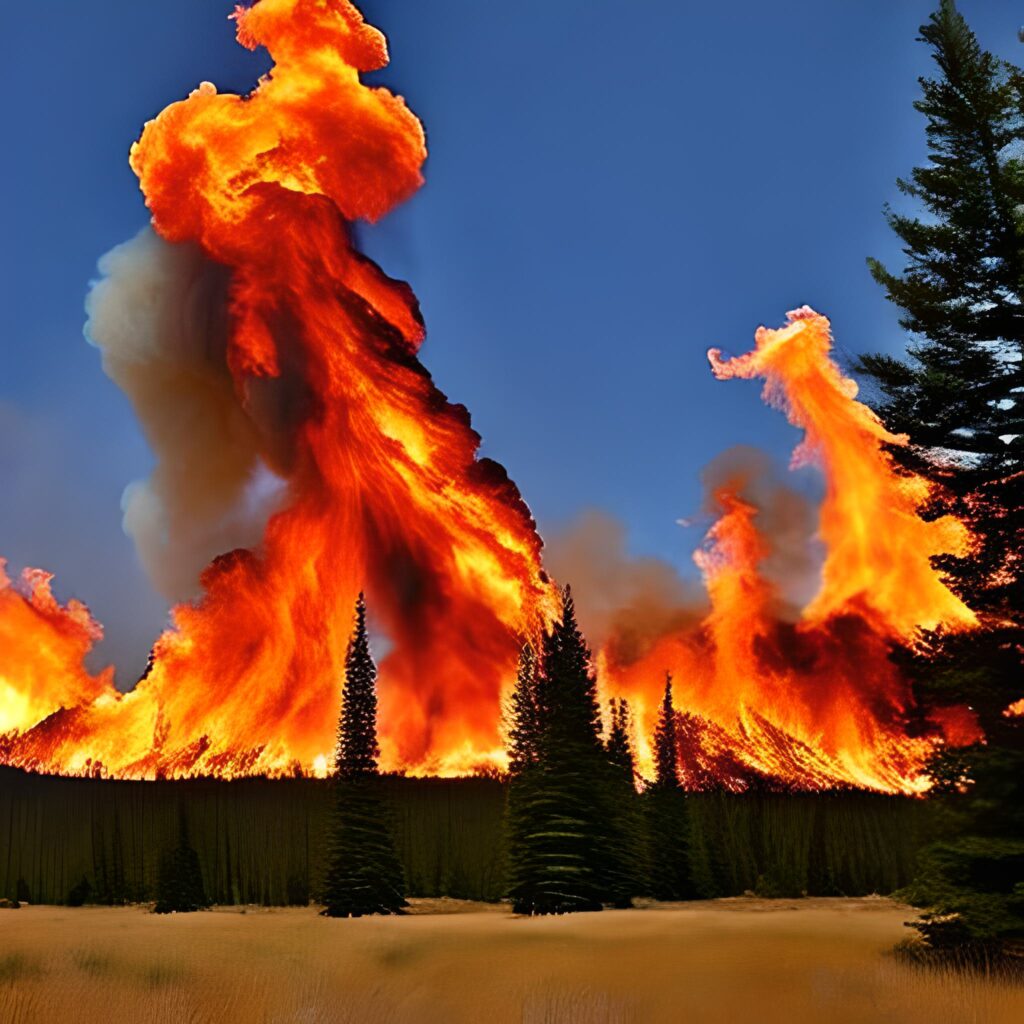
In this blog, we have discussed fire whirls, their formation, types, and effects. We have also explored where fire whirls are most common, the names they go by, and their predictability. Furthermore, we have delved into the deadliest fire whirls in history and how to stay safe during such occurrences.
Fire whirls are natural disasters that can be highly dangerous and destructive. It is important to stay informed and educated about fire safety and to take necessary precautions to prevent fires in the first place. This includes proper disposal of flammable materials, careful handling of fire, and reporting of any potential fire hazards. By raising awareness and promoting fire safety measures, we can reduce the incidence of fire whirls and their impact on our environment.
Fire whirls are a captivating yet formidable natural phenomenon that warrant our admiration and vigilance. They have the potential to happen unpredictably and indiscriminately, and their consequences can be catastrophic. Nevertheless, by comprehending the underlying scientific principles of fire whirls and implementing appropriate safety protocols, we can decrease their impact and safeguard both ourselves and our neighborhoods. Our aspiration is that this blog has supplied you with valuable knowledge on fire whirls and emphasized the significance of fire safety awareness. Remember, prevention is essential to evade the destructive might of fire whirls.
If you want to gain further knowledge about it, you can purchase the recommended book

This was beautiful Admin. Thank you for your reflections.
Awesome! Its genuinely remarkable post, I have got much clear idea regarding from this post